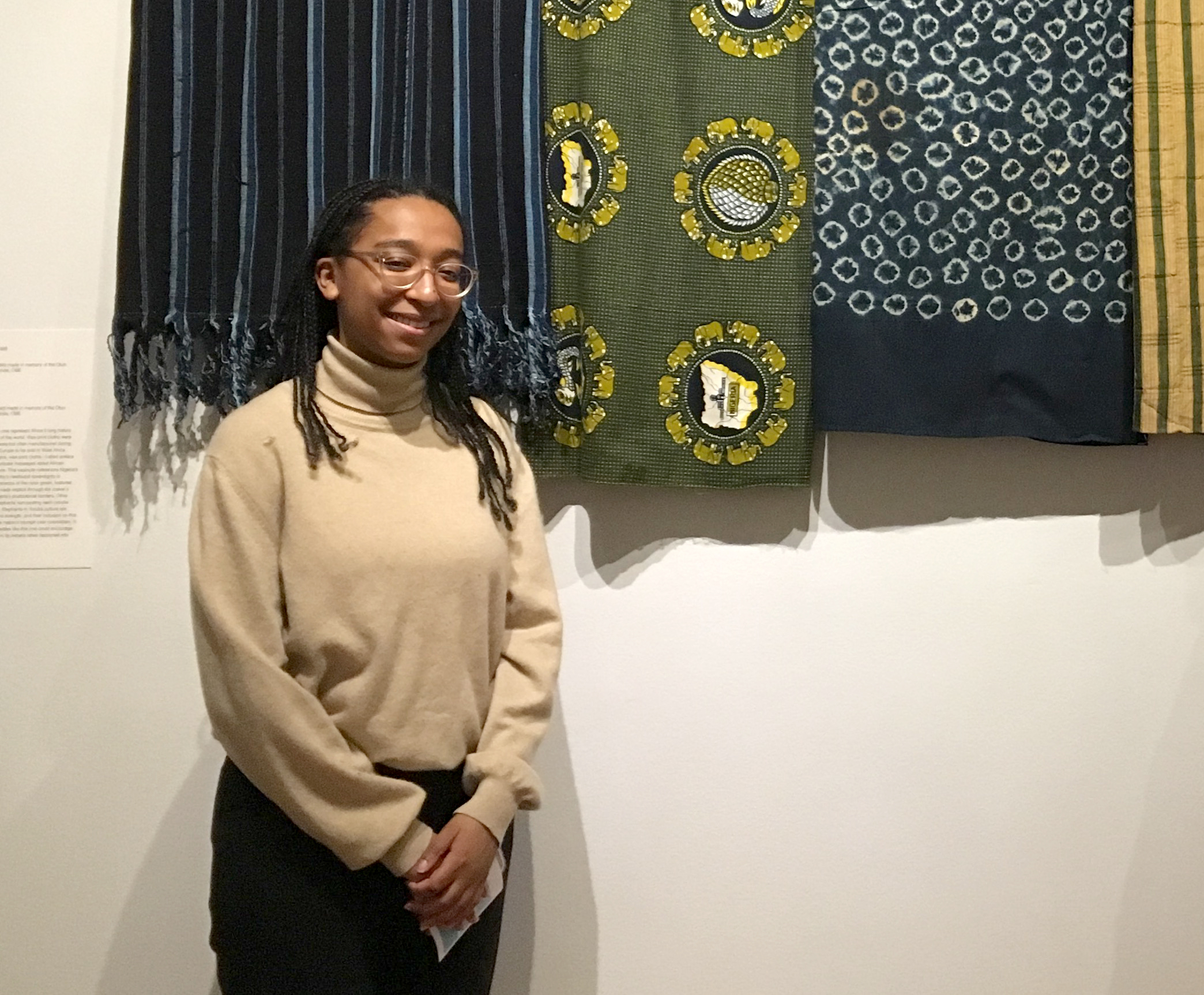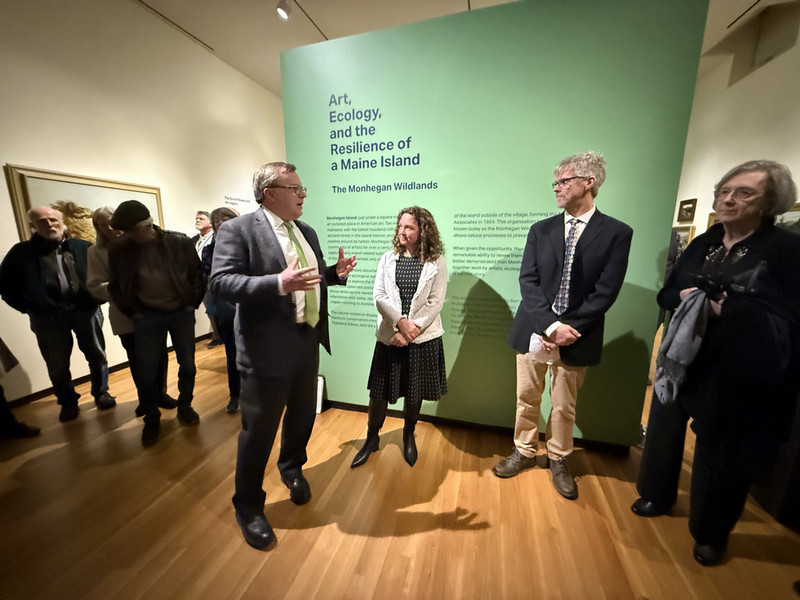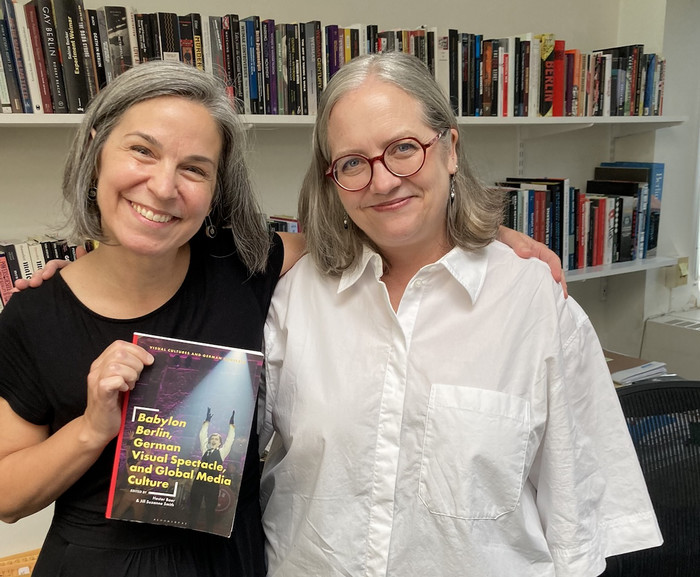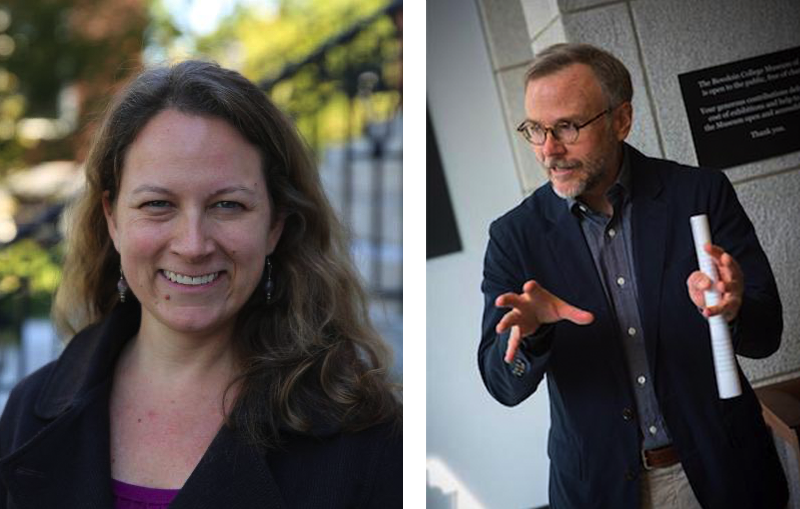Kinaya Hassane ’19 Takes a Critical Eye Toward Art Collecting
By Rebecca GoldfineFor her independent honors project, Kinaya Hassane ’19 is researching the influence of a pair of powerful collectors of African American art. Through them, she's looking at the ways in which "collectors leverage how their tastes get written into the history of art, and how their favorite artists, and they themselves, get written into the history."

For the past year, the art history major has been following the trail of Edgar Thomas Jr. ("E.T.") and Lyn Williams, a wealthy couple from New York City who have been important patrons of African American artists. To aid her honors research, she received a Peter J. Grua and Mary G. O’Connell Faculty Student Research grant from Bowdoin last year to visit archives and galleries around the country.
After establishing a successful career in real estate investment, E.T. and Lyn Williams became notable figures in "elite black society," enabling their access to artists and others in the rarefied world of art. "This is also another point in collecting, which is not just about loving the art and having a passion for artists, but it's also about status, influence, and stature within the circle of people that matter to you," Hassane said.
But while Hassane is looking at the role of wealth and class in the shaping of what artists we think are important, she also emphasizes the many benefits that come from wealthy art collectors, particularly when they donate, as the Williamses have done, to museums and public institutions.
A few of Kinaya's favorite classes
James Baldwin, Guy Mark Foster, associate professor of English
"Baldwin was writing in the ’60s and ’70s, but everything he wrote is extremely relevant to the present day. It's amazing to read him and see that, 'Wow, this resonates with me so deeply.'"
Race and Visual Representation in American Art, Dana Byrd, assistant professor of art history
"This class was a wonderful opportunity to look at this issue I am so preoccupied with through the lens of art and art history. We read a lot of important scholarship on critical race theory that has shaped my thinking and provoked an interest in doing this for the long term and studying this topic in graduate school. So that was a formative course."
Art in the Age of Velazquez, Rembrandt, and Caravaggio, Susan Wegner, associate professor of art history
"I didn't think I would be interested in Baroque art, given my interest in modern/contemporary art. But we took a trip to Rome over spring break—and that was really so amazing to be able to see the objects we were discussing in class in person, in the Vatican and in the Borghese Gallery. It shifted my perspective in a way that I think a liberal arts education is supposed to do."
"The goal of my project is to make these things coexist," Hassane said. "The Williamses are doing a good thing, but they're also doing something that is informed by their consciousness of their wealth and class."
One artist in particular would likely still be unknown if it weren't for E.T. and Lyn buying the contents of his studio (about 400 pieces) and giving the majority of the works to museums. "We wouldn't be studying Claude Lawrence if it weren't for them," Hassane said. "It's a shining example of how a collector can insert an artist into the canon."
Hassane is also quick to applaud the Williamses' efforts to support African American artists. "I think a lot of what they're doing is great because many of these artists have been historically overlooked and they're trying to remedy that," she said.
Hassane's advisor, Assistant Professor of Art History Dana Byrd, said Hassane's use of the term "activist-collector" is a particularly apt one to describe the Williamses' mission to promote the cultural contribution of African American artists.
"They certainly appreciate the visual and material qualities of the African American art they collect, but they are also deeply interested in the ways that their collection can teach audiences about the presence and cultural contributions of African Americans to American culture," Byrd said. Their strategic donations to different institutions "ensure that the museums display the most expansive possible vision of American art."
Byrd said that Hassane's honors project succeeds on two levels: "One, it is an act of service to the discipline of art history, as she maps the contours of this little-known but important archive, in order to make its contents more accessible to future scholars. Two, she has taken the contents of the archive and contextualized them to reveal the true nature of the Williamses' collecting activities."
Hassane did not come to Bowdoin to study art history, although she always loved visiting art museums in the DC area with her parents when she was growing up. But in her first semester at Bowdoin, she became fascinated with the subject after taking Introduction to Art History, a course taught that year by professors Byrd, Peggy Wang, and Stephen Perkinson.
Then, in her sophomore year, Hassane became involved with the Mellon Mays Undergraduate Fellowship Program, which launched her broader research interests in racial identity in art.
"I like a wide range of black artists who are working today [e.g., Henry Taylor and Deana Lawson]," Hassane said. "They fascinate me, and I try to keep up with what they're doing, to see how they're working with the kind of difficult task of working within African American art, which is heavily politicized."
She continued, "These artists either lean into that politicization, or move away from that and focus on aesthetics. They get uniquely placed with this burden."
The subject of racial identity in American art and art collection is complex and layered, and Hassane said she's enjoyed every minute of traveling down this research path. "I got really lucky to get to this campus, to click with Professor Byrd, and to have her take the time to work with me, and to also have access to the resources of the Bowdoin Museum and the rest of the art history department faculty," she said.



